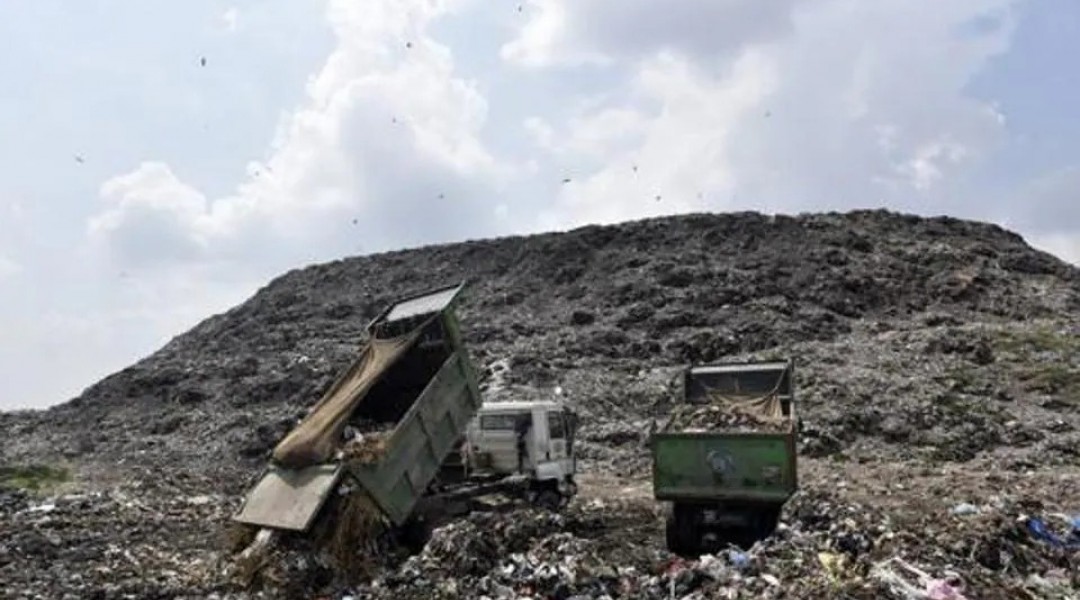
The Ghazipur landfill in Delhi, India, is a towering monument to our modern consumerist culture, a mountain of trash that has grown to an alarming height of 65 meters that is almost as high as the Qutub Minar. This vast expanse of waste is a stark reminder of our unsustainable reliance on plastic, a material that has infiltrated every aspect of our lives.
According to a 2019 study published in the journal Waste Management, plastic constitutes a staggering 22% of the waste at the Ghazipur landfill that means 1 out of every 5 pieces of trash at the landfill is plastic. This plastic waste poses a severe threat to the environment, both locally and globally.
The plastic waste at the Ghazipur landfill is a breeding ground for a variety of environmental hazards. As the plastic decomposes, it releases harmful toxins into the soil and groundwater, contaminating drinking water sources and harming local ecosystems. The burning of plastic, which often occurs at the landfill, releases toxic fumes into the atmosphere, contributing to air pollution and respiratory illnesses.
The plastic waste also poses a direct threat to wildlife. Animals often mistake plastic for food, leading to ingestion and potential death. Birds, in particular, are particularly vulnerable, as they often mistake plastic bags for food or nesting materials.
Impact on Delhi's Environment
The Ghazipur landfill is not just an environmental eyesore; it is also a significant contributor to Delhi's air and water pollution. The burning of plastic releases harmful air pollutants, including dioxins and furans, which are known carcinogens, equivalent to the annual emissions of 500,000 cars. The leachate from the landfill, a toxic liquid containing dissolved waste, contaminates groundwater sources, posing a serious health risk to the city's residents.
The Solution: Naturally Compostable Packaging
The solution to the Gazipur garbage mound and the broader problem of plastic pollution lies in a shift towards sustainable packaging materials. Naturally compostable packaging made from bagasse, hemp fiber, wheat straw, and other plant-based materials offers a viable alternative to plastic. These materials are biodegradable and breakdown naturally into non-toxic substances, reducing the environmental impact of packaging waste.
Benefits of Naturally Compostable Packaging
1. Reduces Plastic Waste: By replacing plastic packaging with compostable alternatives, we can significantly reduce the amount of plastic waste entering landfills and contaminating our environment.
2. Improves Soil Health: Compostable packaging breaks down into nutrient-rich compost, which can be used to improve soil health and support sustainable agriculture.
3. Reduces Greenhouse Gas Emissions: The production of compostable packaging typically requires less energy and produces fewer greenhouse gas emissions compared to plastic packaging.
Conclusion
The Gazipur garbage mound is a stark reminder of the consequences of our unsustainable reliance on plastic. However, it also presents an opportunity to transition towards a more sustainable future. By embracing naturally compostable packaging materials, we can reduce our environmental footprint and protect our planet for generations to come.

1 Comment(s)
Các khuyến mãi của FB88 luôn khiến tôi cảm thấy rất hào hứng và có cơ hội nhận được nhiều phần thưởng.
Tôi cảm thấy rất hài lòng về dịch vụ khách hàng của FB88, họ luôn giúp tôi giải quyết vấn đề rất nhanh chóng.
Tôi rất thích các trò chơi trên FB88, luôn có những sự kiện thú vị để tham gia.
Leave a Comment